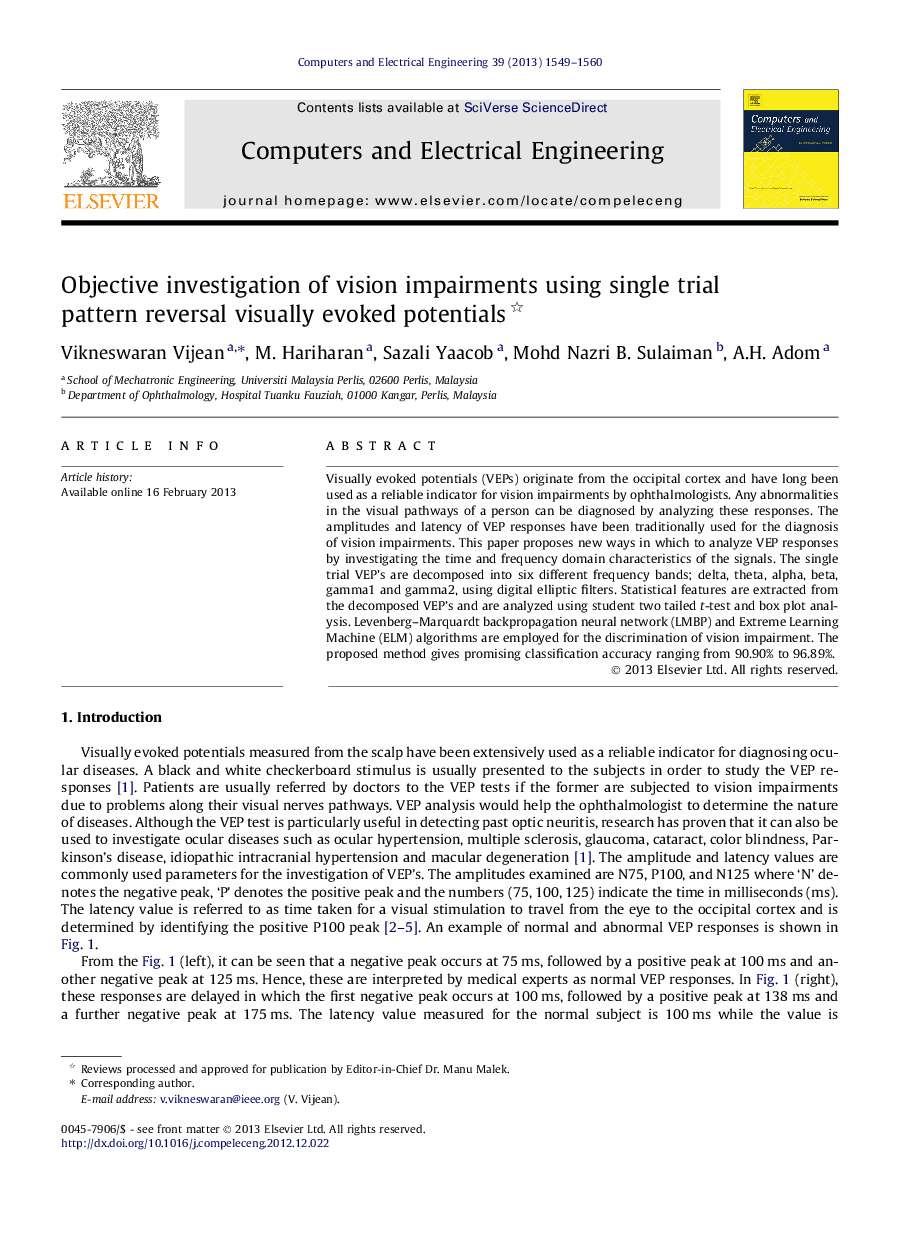| Article ID | Journal | Published Year | Pages | File Type |
|---|---|---|---|---|
| 455718 | Computers & Electrical Engineering | 2013 | 12 Pages |
Visually evoked potentials (VEPs) originate from the occipital cortex and have long been used as a reliable indicator for vision impairments by ophthalmologists. Any abnormalities in the visual pathways of a person can be diagnosed by analyzing these responses. The amplitudes and latency of VEP responses have been traditionally used for the diagnosis of vision impairments. This paper proposes new ways in which to analyze VEP responses by investigating the time and frequency domain characteristics of the signals. The single trial VEP’s are decomposed into six different frequency bands; delta, theta, alpha, beta, gamma1 and gamma2, using digital elliptic filters. Statistical features are extracted from the decomposed VEP’s and are analyzed using student two tailed t-test and box plot analysis. Levenberg–Marquardt backpropagation neural network (LMBP) and Extreme Learning Machine (ELM) algorithms are employed for the discrimination of vision impairment. The proposed method gives promising classification accuracy ranging from 90.90% to 96.89%.
► We have proposed robust time and frequency domain based features for better representation of VEPs for vision impairments. ► Two different classification algorithms are employed to test the efficacy of the proposed features. ► 96.89% of efficiency is recorded for the discrimination of vision impairments using the proposed methodology.
